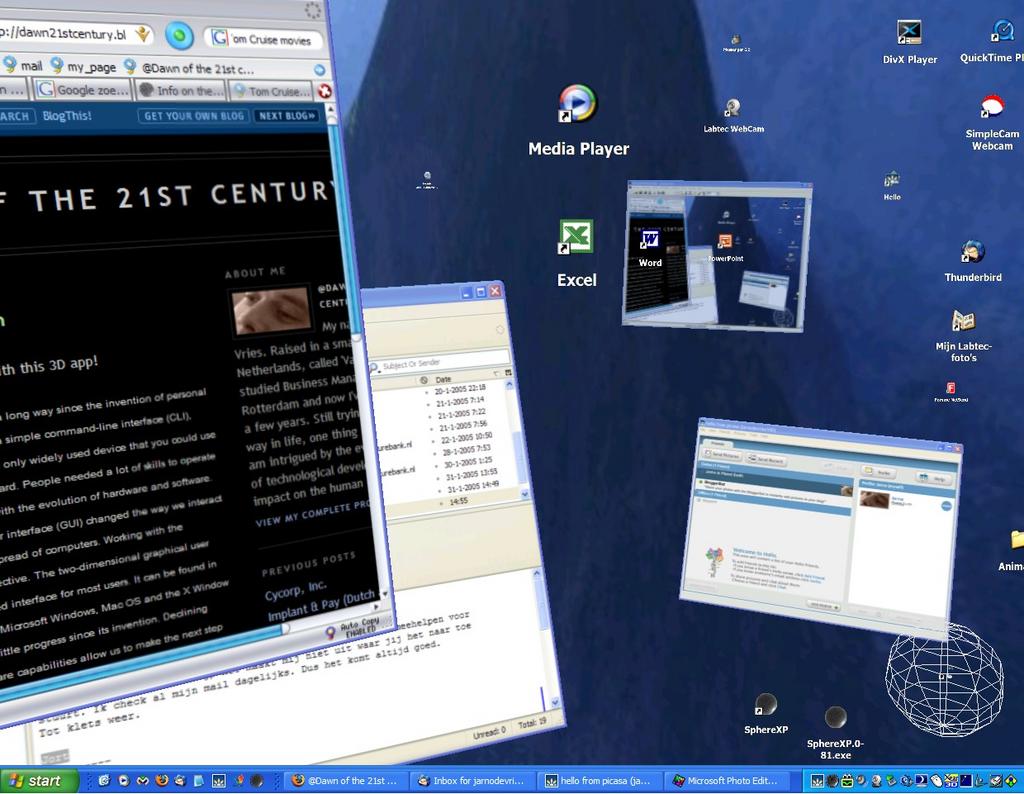
Well well well. Lot's of bizarre stuff going on out there. Seen CNN lately? They came up with quite a creative new way of bringing the news. I thought it was pretty cool myself. As you can see in the picture above, Wolf Blitzer and Jessica Yellin. Wolf Blitzer is real & Jessica is a hologram. Read all about it
here.
If that's not crazy enough for you, what about this: The US army is '
pushing X-files tech development'. Example >> they are busy creating what they call self-aware virtual photorealistic soldiers that can be deployed in the battlefield through "quantum ghost imaging".
Uhm, come again? Well, just check out the picture below and then read the sentence again...

That's right. Imagine, poor suicide-bombers. Whoops, no virgins for you, you just 'blew up' a hologram. It's just not fair is it? You get filmed by robotic cameras, bombed by drones and when you finally find a real human being to get back at, he's not real. Yes yes, the Matrix is coming..
And no I'm not joking, This stuff is for real. They are working really hard on these virtual soldiers.
'We want to use massively multi-player online games as an experimental laboratory to see if they’re good enough to convince humans that they’re actually human, that can think on their own, have emotions and talk in local slang' - Dr. John Parmentola—Director of Research and Laboratory Management
Since I am Jarno it's quite easy to get me excited. I tend to think more often than not, that things go faster than expected. The statement above however, even to me, is a bold one. Because we're essentially talking full-blown artificial intelligence here. I wrote an article about that, two weeks ago, very extensive, in which I explain that I don't even believe anyone will be able to 'build' such a system by 2030 (there's a bet out there between two scientists that the Turing Test - the test for artificial intelligence - will be passed by 2029).
And that's just one part of the idea. Once the programs have been 'perfected' they want to deploy them (as you can see in the picture above, except for the fact that they won't look blue but real) by means of a technique called 'quantum ghost imaging' (pairing photons that do no reflect or bounce off an object, but off other photons >> I have no idea what that means).
Creating Artificial Intelligence and perfect holograms. And that's just ONE project. Several other projects they are CURRENTLY working on:
- Erasing bad memories
- Devices that will translate one soldier's thoughts into electrical signals that can be beamed to other soldiers
- Regenerating body parts on "nano-scaffolding"
Amazing.
 Here's an interesting research project I stumbled upon: Lucidtouch, for all those with fingers bigger than the Iphone practically allows for. This Microsoft device allows you to reach behind the screen to make selections...
Here's an interesting research project I stumbled upon: Lucidtouch, for all those with fingers bigger than the Iphone practically allows for. This Microsoft device allows you to reach behind the screen to make selections...

















